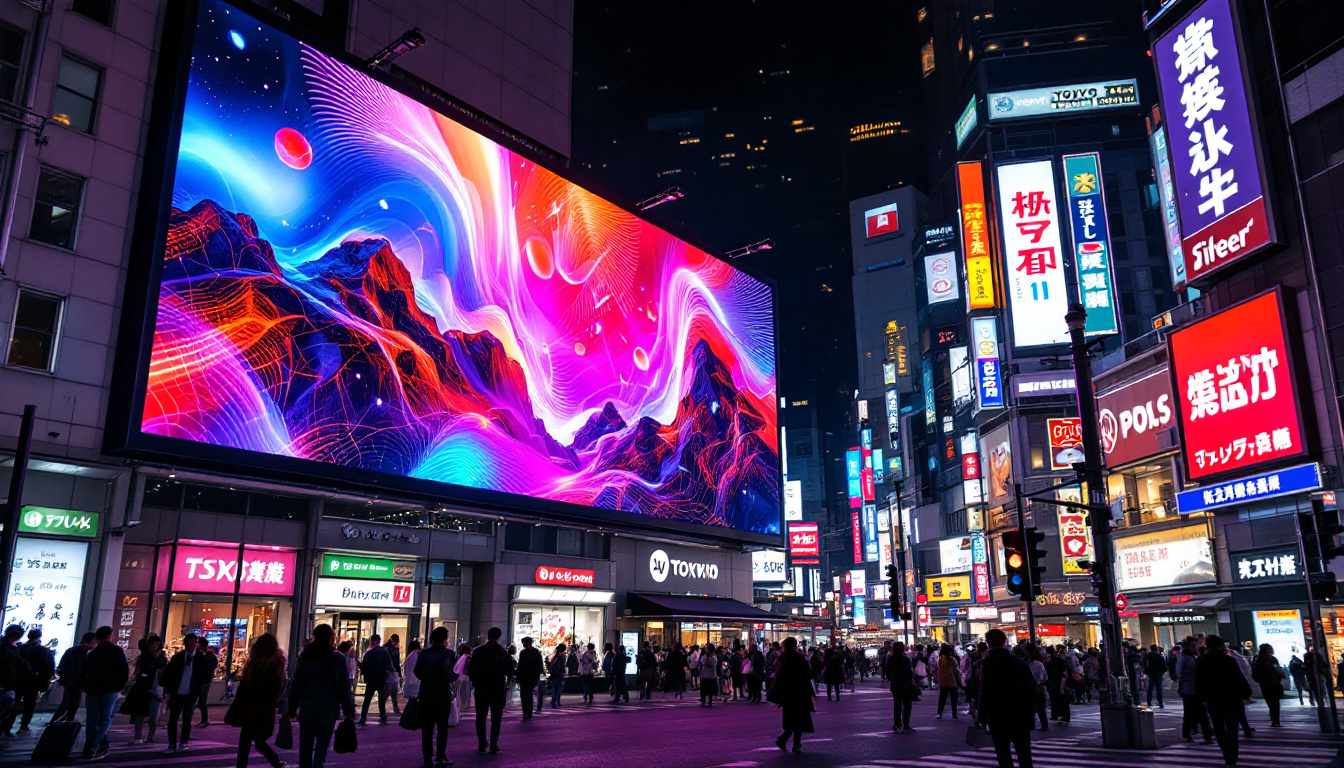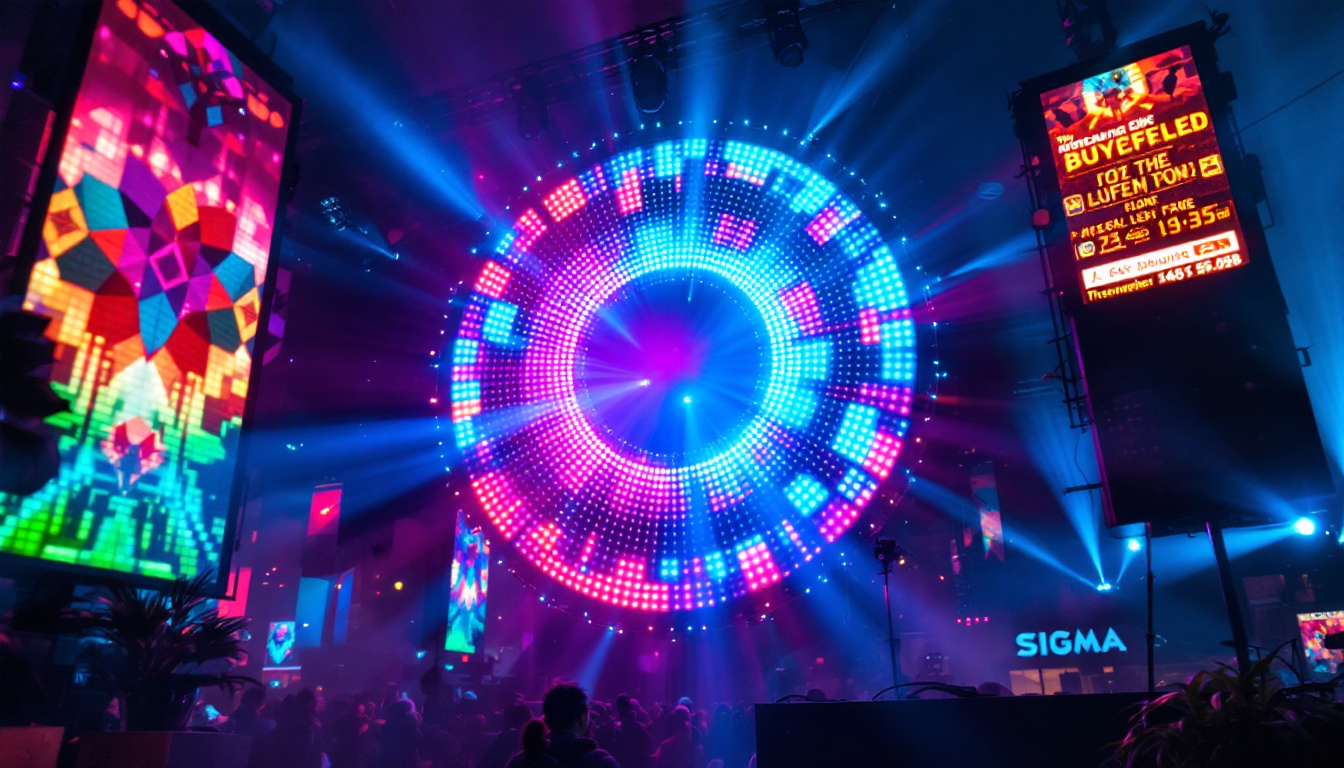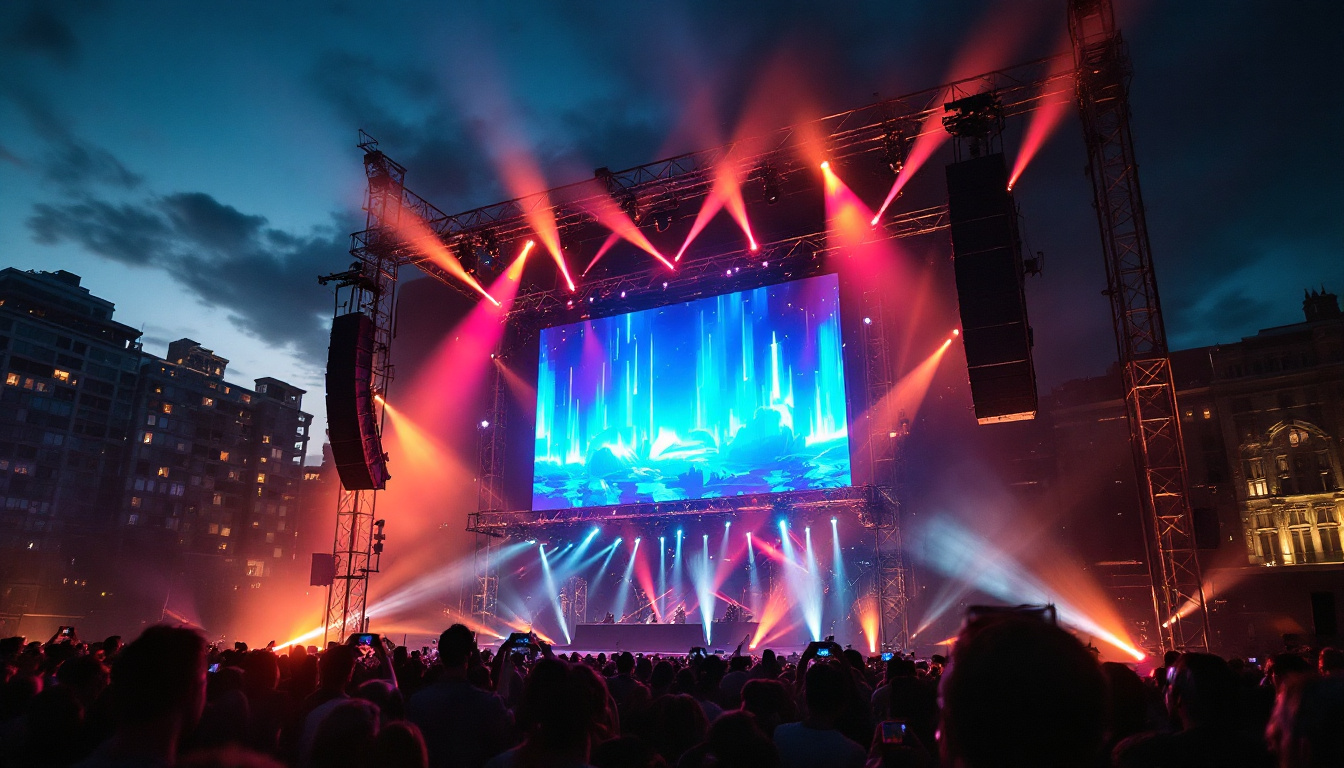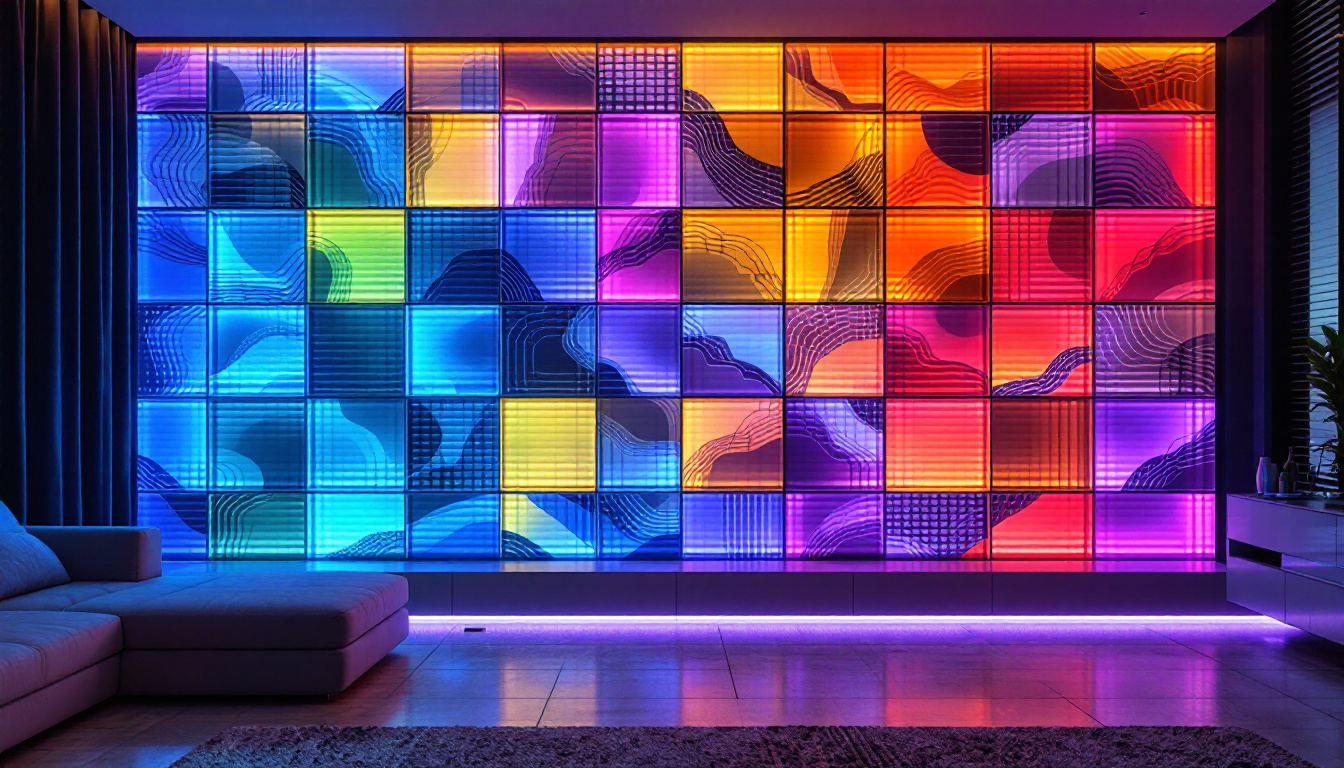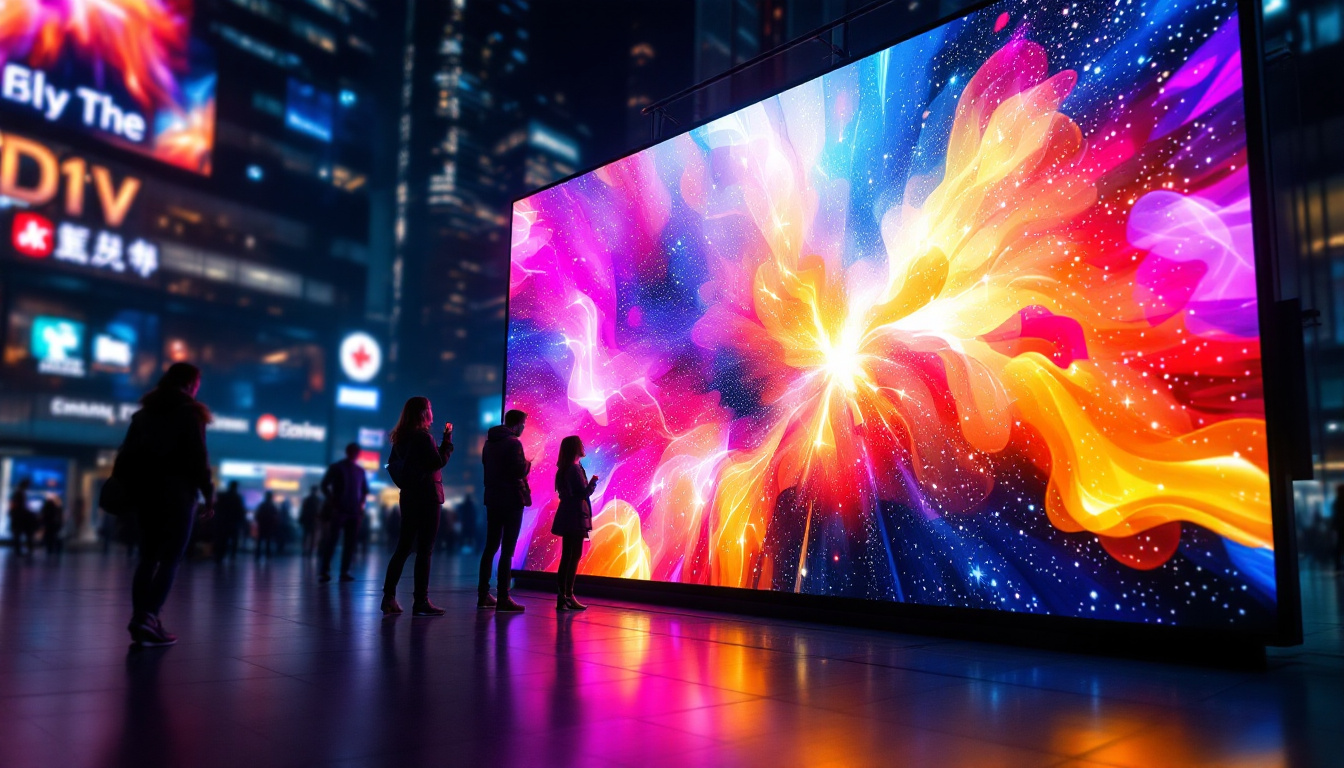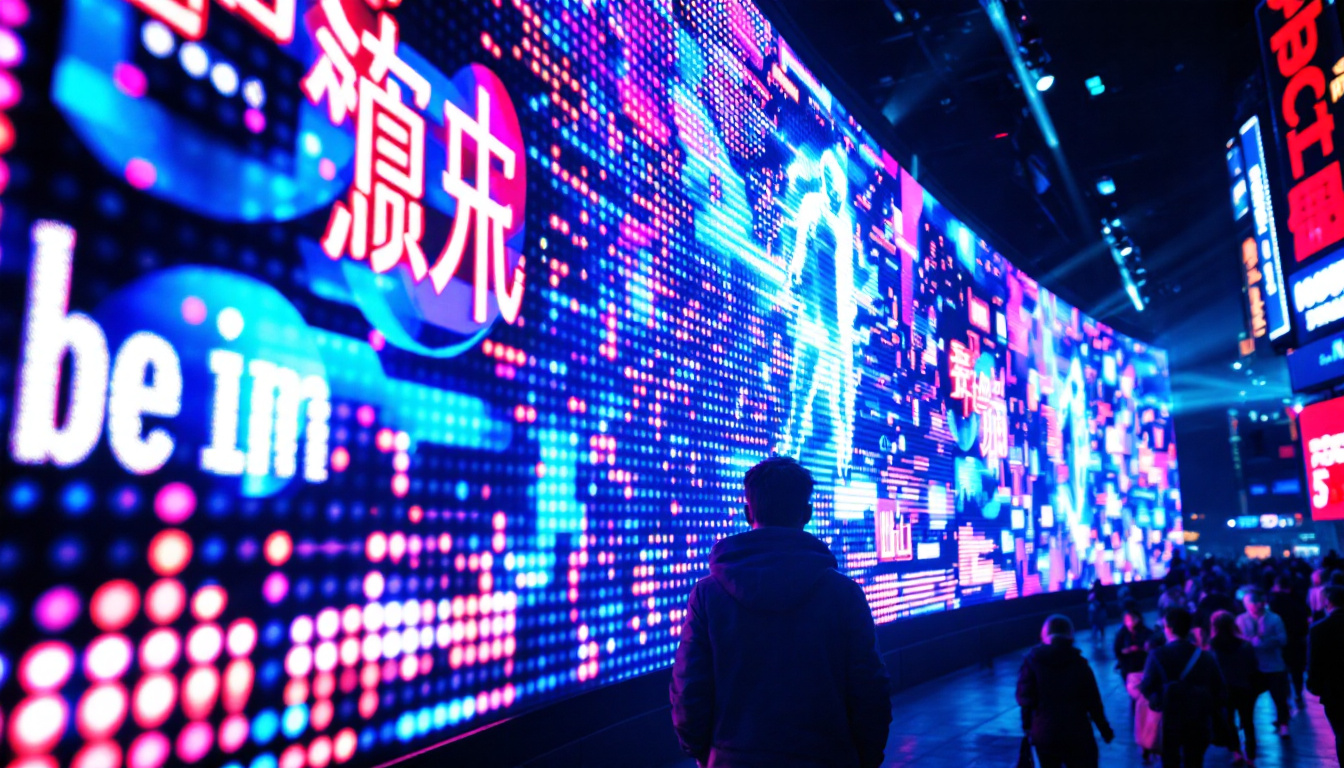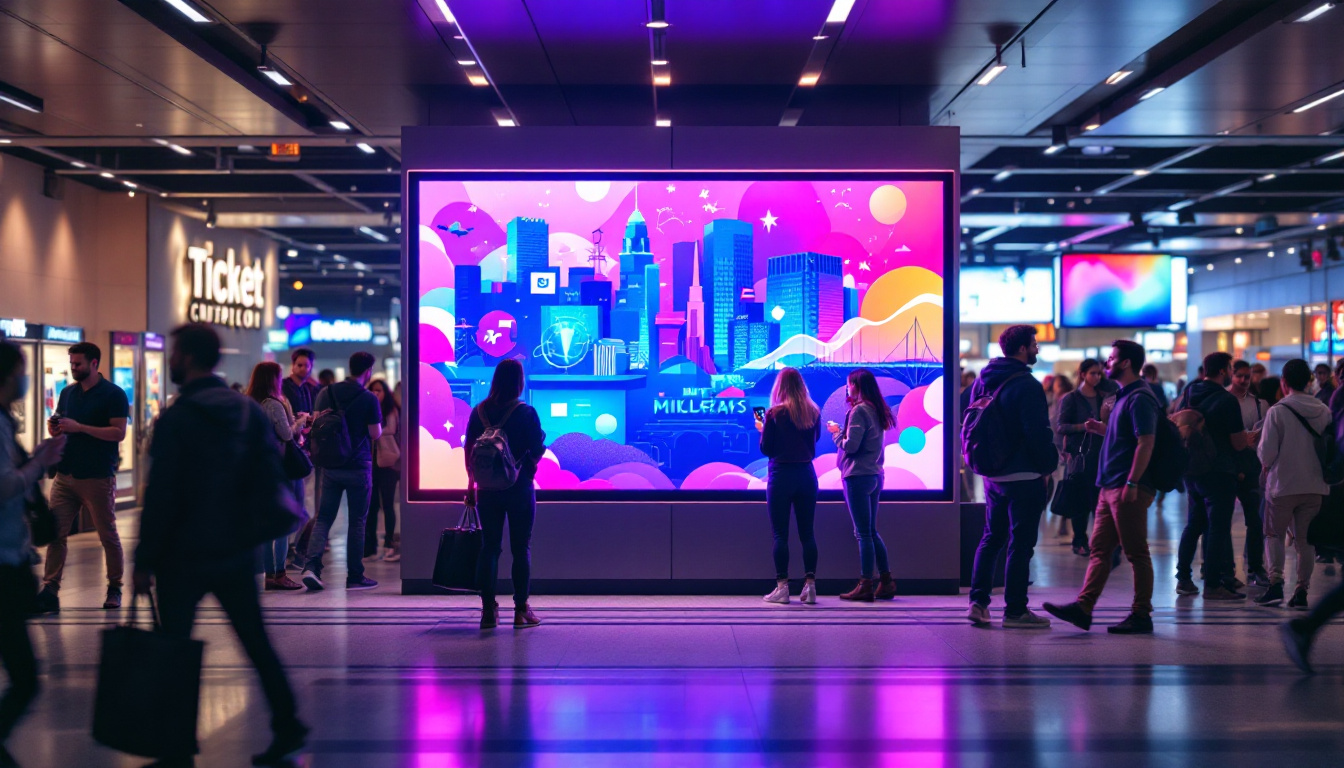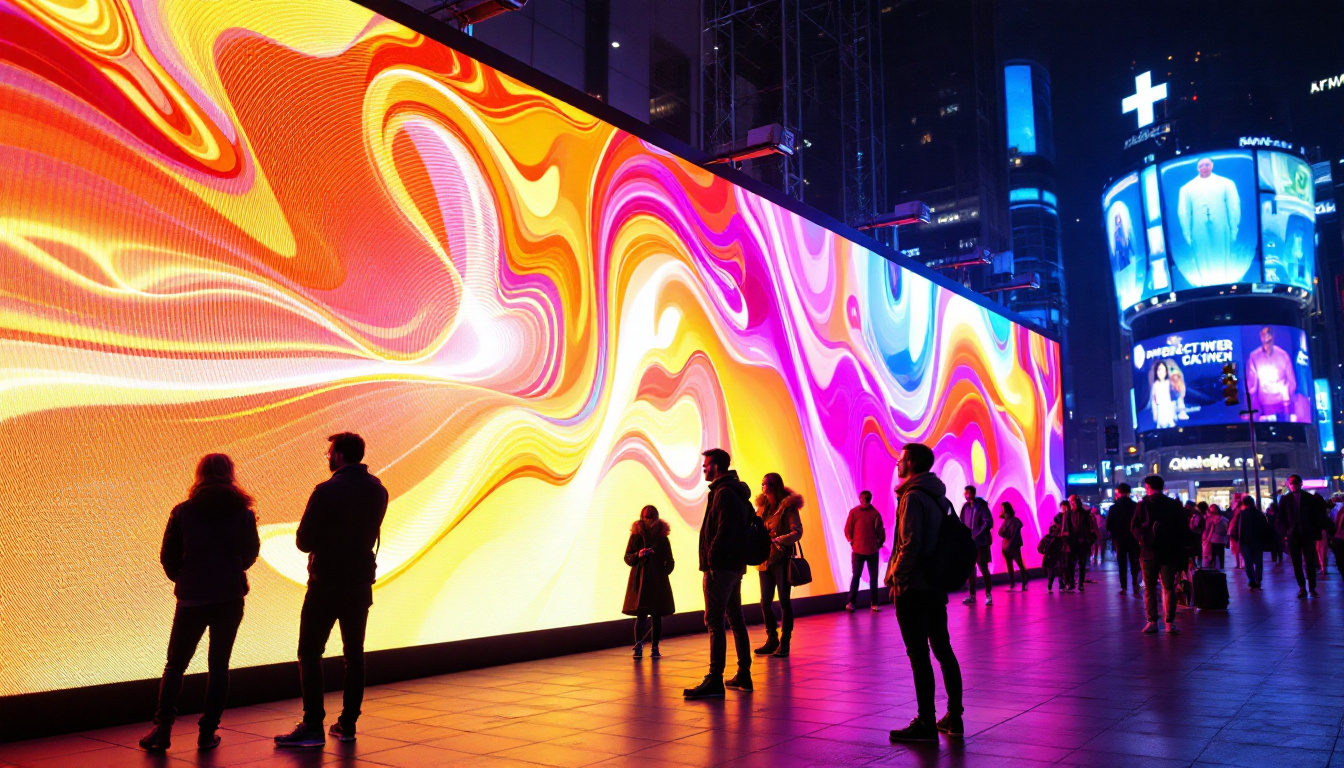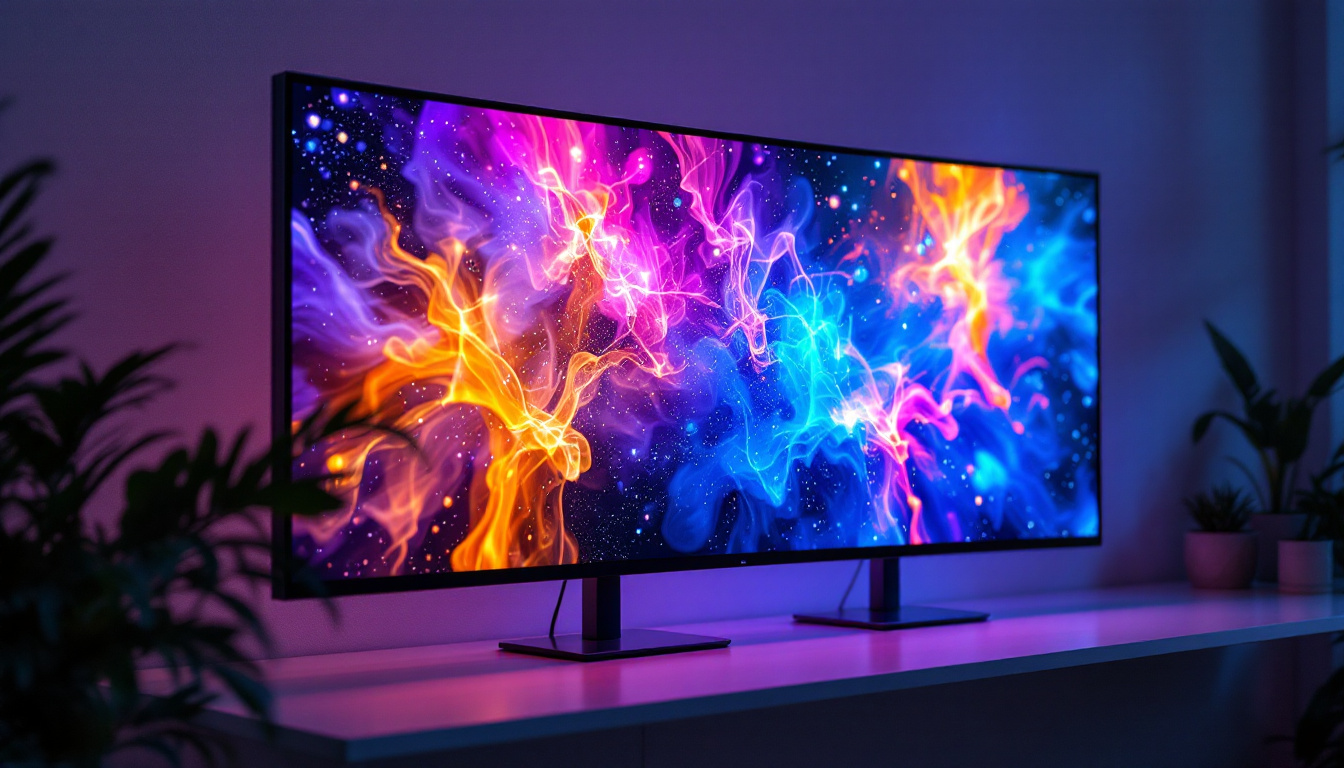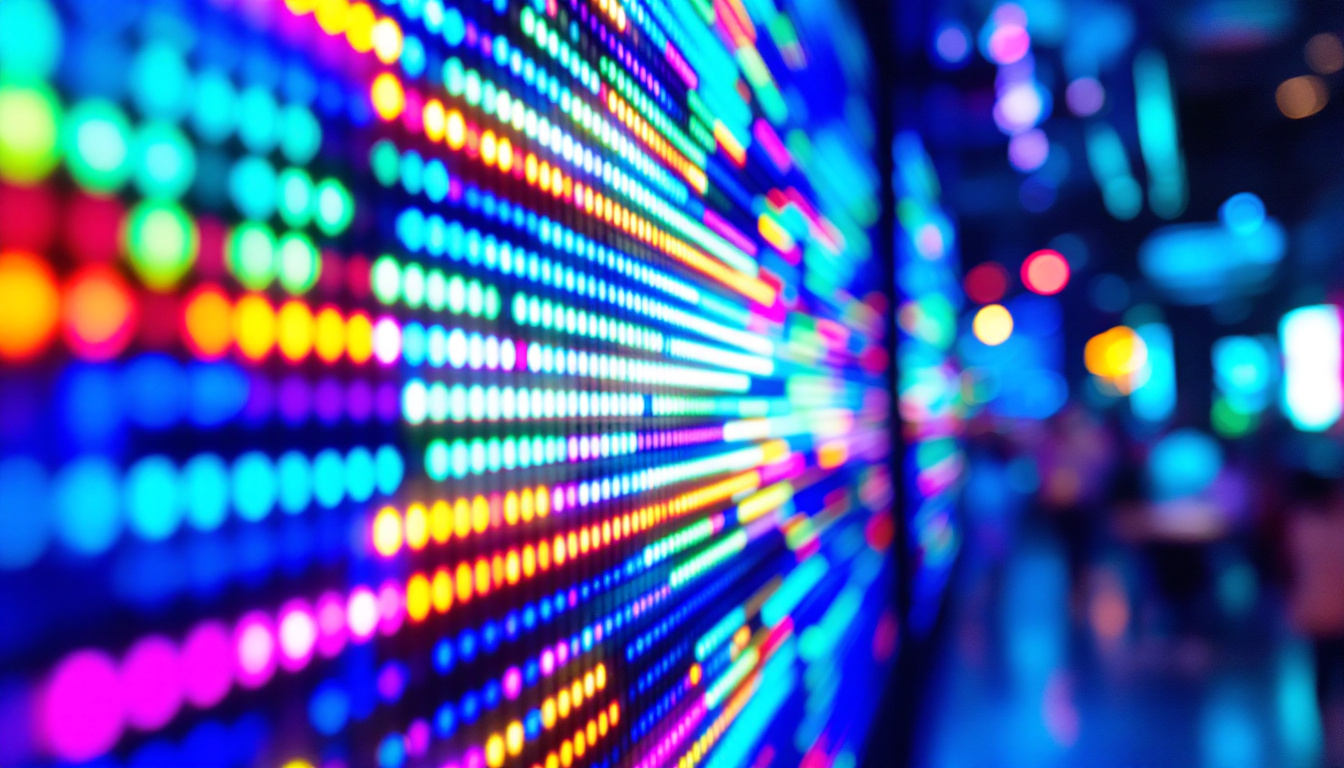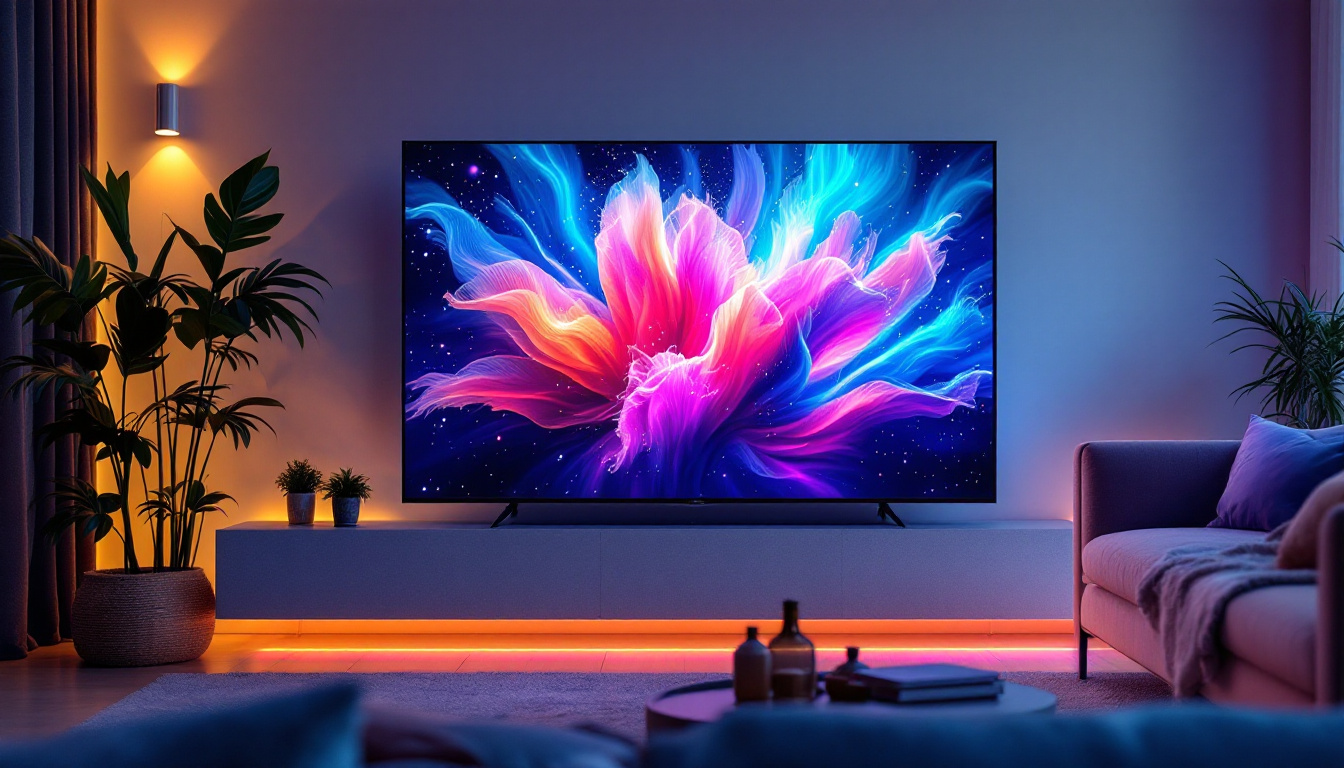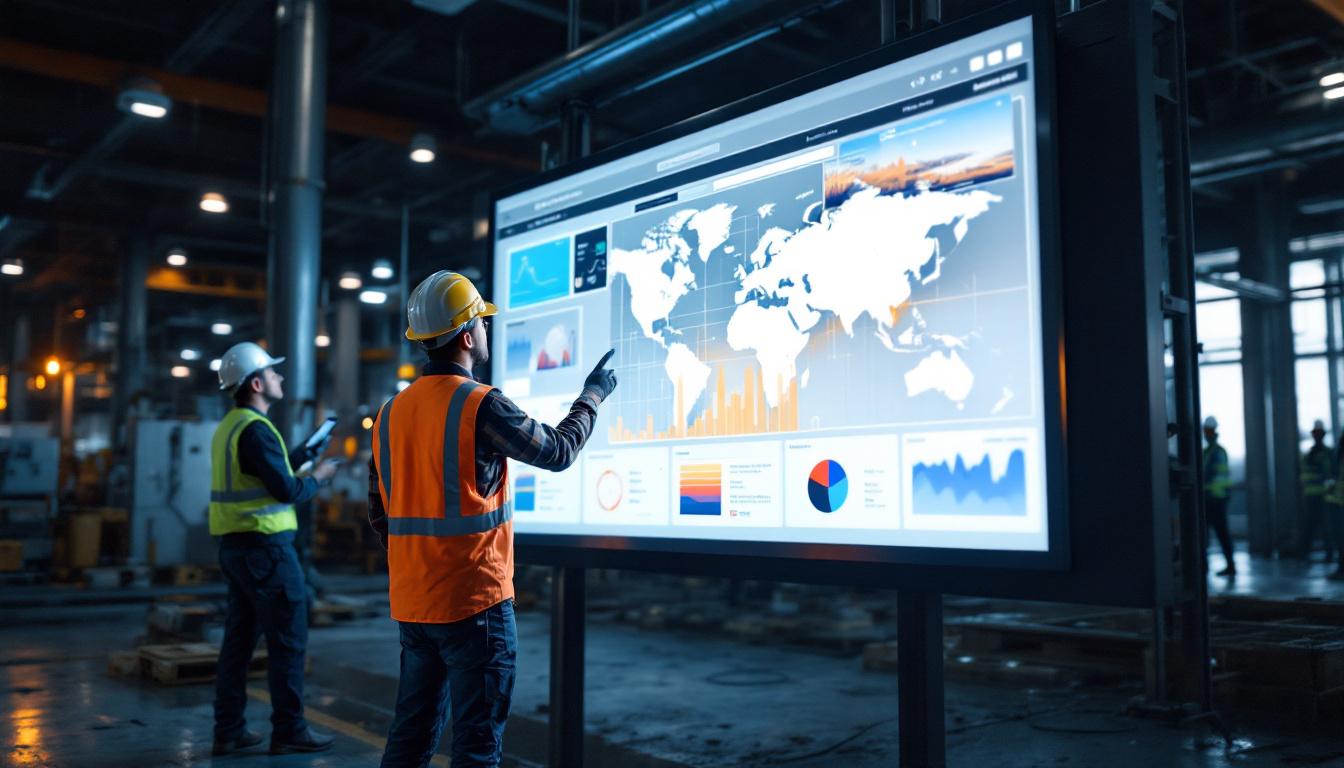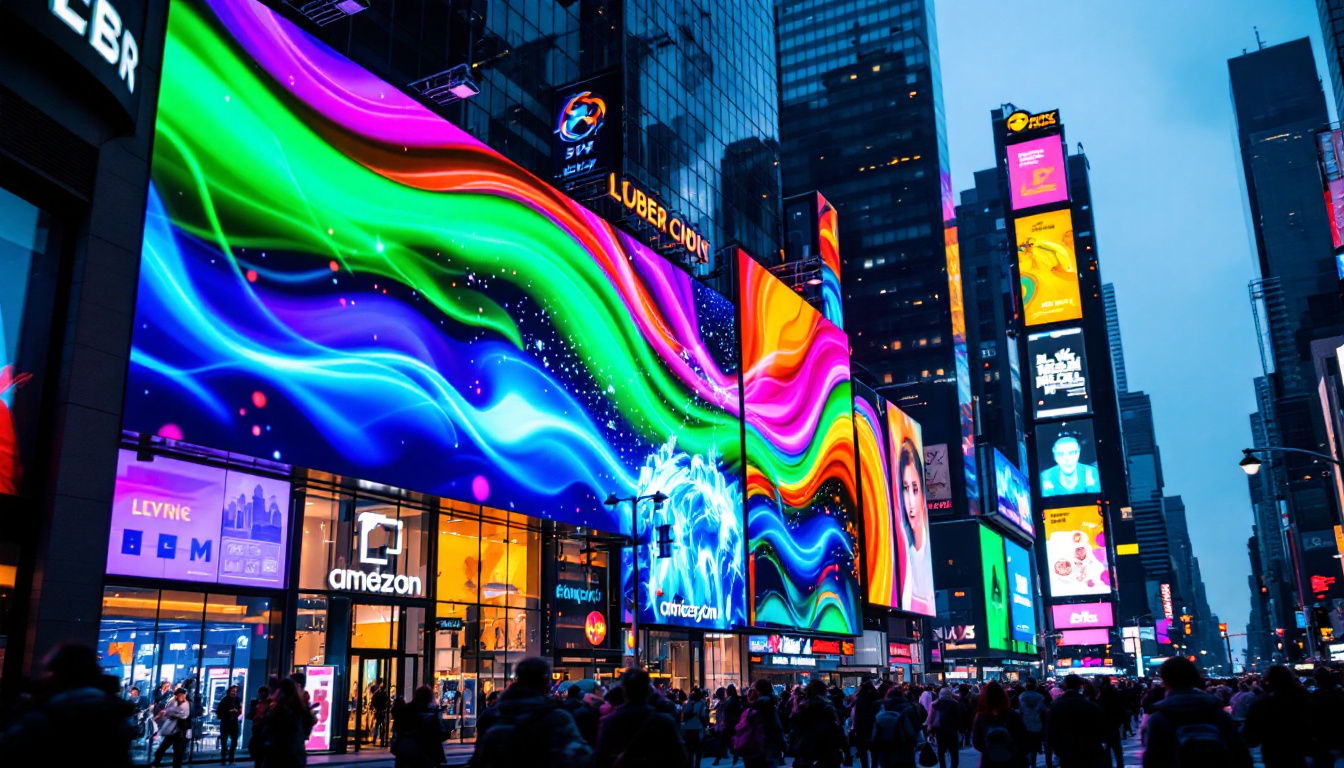The rapid evolution of display technology has transformed the way we interact with digital content, making screens not only more vibrant and energy-efficient but also increasingly interactive. Among the most prominent advancements in this field is the LED display, which has become a cornerstone in various industries—from advertising and entertainment to education and corporate communication. This article delves into the world of interactive LED screens, exploring their technology, applications, benefits, and future trends.
Understanding LED Display Technology
What is an LED Display?
LED stands for Light Emitting Diode, a semiconductor device that emits light when an electric current passes through it. An LED display is essentially a flat panel that uses an array of these tiny LEDs to create images, videos, and animations. Unlike traditional LCD screens, which rely on backlighting, LED displays produce their own light, resulting in brighter images and better contrast ratios.
The pixels on an LED screen are composed of red, green, and blue diodes, which combine to produce a full spectrum of colors. The intensity of each diode can be controlled individually, enabling the screen to display vibrant, high-resolution images with remarkable clarity and color accuracy. This capability makes LED displays particularly appealing for applications where visual impact is paramount, such as in concert venues, sports arenas, and large-scale advertising billboards.
Additionally, the longevity of LED technology is noteworthy; these displays can last up to 100,000 hours, significantly reducing the need for frequent replacements and maintenance. This durability makes them an economically sound choice for businesses and organizations looking to invest in long-term display solutions.
Types of LED Displays
LED displays come in various forms, each suited to different environments and purposes:
- Indoor LED Displays: Designed for use in controlled lighting environments, these screens offer high resolution and brightness levels suitable for conference rooms, retail stores, and indoor advertising.
- Outdoor LED Displays: Built to withstand harsh weather conditions and bright sunlight, these displays typically have higher brightness (up to 10,000 nits) and robust protective casings. Their resilience ensures that they remain visible even in direct sunlight, making them ideal for outdoor events and advertising.
- Flexible and Transparent LED Displays: Emerging technologies allow LED panels to be curved, bent, or made transparent, enabling innovative installations such as curved walls or shop windows that double as digital displays. This flexibility opens up new avenues for creative advertising and artistic expression, allowing designers to integrate technology seamlessly into their environments.
How Interactive LED Screens Work
Interactive LED screens combine the visual power of LED technology with touch-sensitive interfaces. These screens can detect user inputs through various methods, including capacitive touch, infrared sensors, or optical cameras. When a user touches or gestures near the screen, the system processes the input and responds accordingly, enabling dynamic interaction.
Modern interactive LED displays often support multi-touch capabilities, allowing several users to engage simultaneously. This feature is particularly valuable in collaborative environments like classrooms, meeting rooms, and public information kiosks. The ability to share and manipulate content in real-time fosters a more engaging and participatory experience, enhancing learning and communication. Furthermore, these screens can integrate with various software applications, enabling users to access a wide range of interactive content, from educational tools to immersive marketing experiences.
Moreover, the integration of augmented reality (AR) with interactive LED screens is paving the way for even more innovative applications. By overlaying digital information onto the physical world, AR can enhance user experiences in retail, tourism, and entertainment. Imagine walking through a museum and seeing additional information about an exhibit displayed on an interactive LED screen, or trying on clothes virtually in a store without ever stepping into a fitting room. These advancements are transforming how we interact with digital content, making it more intuitive and accessible than ever before.
Applications of Interactive LED Displays
Corporate and Educational Environments
Interactive LED displays have revolutionized presentations and collaborative workspaces. In corporate settings, these screens facilitate dynamic meetings, brainstorming sessions, and video conferencing. Their large size and clarity ensure that content is visible to all participants, while touch functionality allows for real-time annotations and content manipulation.
In education, interactive LED screens enhance learning experiences by enabling teachers and students to engage directly with digital content. Interactive lessons, multimedia presentations, and virtual simulations become more immersive, fostering better understanding and retention. Furthermore, these displays can support diverse learning styles, allowing visual learners to grasp complex concepts through vivid graphics and animations, while kinesthetic learners can benefit from hands-on activities that encourage exploration and discovery.
Additionally, the integration of interactive LED displays in classrooms promotes collaboration among students. Group projects can be executed seamlessly, with students working together to create presentations or solve problems on the screen. This not only cultivates teamwork but also prepares students for future workplaces where technology and collaboration are paramount.
Retail and Advertising
Retailers leverage interactive LED displays to attract customers and provide personalized shopping experiences. Digital signage with touch capabilities allows shoppers to browse product catalogs, check availability, and access promotions on the spot. This interactivity increases engagement and can drive sales.
Outdoor LED billboards with interactive features are also gaining popularity. For example, some installations invite passersby to play games, participate in polls, or explore augmented reality experiences, creating memorable brand interactions that go beyond traditional advertising. These interactive elements not only capture attention but also encourage social sharing, as customers are likely to post their experiences on social media, further amplifying brand visibility.
Moreover, retailers are increasingly using data analytics in conjunction with these displays. By tracking user interactions, businesses can tailor their marketing strategies to better meet consumer preferences, ensuring that the content displayed is relevant and engaging. This data-driven approach transforms passive advertising into a dynamic conversation between brands and consumers, enhancing customer loyalty and satisfaction.
Public Spaces and Entertainment
Interactive LED screens are becoming staples in museums, airports, stadiums, and other public venues. They provide wayfinding assistance, event information, and interactive exhibits that captivate audiences. In entertainment, LED walls with touch or gesture controls offer new possibilities for immersive performances and installations.
In museums, for instance, interactive displays can bring history to life, allowing visitors to explore artifacts through augmented reality or engage in interactive timelines that provide context and depth to exhibitions. This not only makes learning enjoyable but also encourages visitors to spend more time in the venue, enhancing their overall experience.
Stadiums and concert venues are also embracing interactive LED technology to elevate the spectator experience. Fans can participate in live polls, view instant replays from multiple angles, and even interact with the event through mobile apps that sync with the displays. This blend of technology and entertainment creates a more engaging atmosphere, making each event memorable and unique.
Advantages of Interactive LED Displays
Superior Visual Quality
One of the primary benefits of LED technology is its exceptional brightness and contrast. LED displays can achieve brightness levels far beyond those of LCDs, making them suitable for environments with high ambient light. Their wide color gamut and fast refresh rates also contribute to vivid, smooth visuals that enhance user experience.
Energy Efficiency and Longevity
LEDs are inherently energy-efficient, consuming less power than traditional display technologies. This efficiency translates to lower operating costs, especially for large-scale installations that run continuously. Additionally, LEDs have a long lifespan—often exceeding 50,000 hours—reducing maintenance and replacement expenses.
Interactive Engagement
The integration of touch and gesture controls transforms passive displays into interactive platforms. This engagement encourages active participation, whether in learning environments, retail spaces, or public installations. Interactive LED screens can adapt content dynamically based on user input, offering personalized experiences that resonate more deeply with audiences.
Scalability and Customization
LED displays are highly modular, allowing for customization in size and shape. This scalability makes them ideal for a broad range of applications, from small meeting room panels to massive outdoor video walls. The ability to tailor the display to specific needs enhances versatility and design flexibility.
Challenges and Considerations
Initial Investment Costs
Despite their many advantages, interactive LED displays can require a significant upfront investment. High-quality LED panels, touch sensors, and supporting hardware add to the initial cost. However, the long-term benefits in durability, energy savings, and user engagement often justify this expense.
Technical Complexity
Installing and maintaining interactive LED systems demands technical expertise. Calibration, software integration, and regular maintenance are essential to ensure optimal performance. Organizations must consider these factors when planning deployment and allocate resources accordingly.
Environmental Factors
Outdoor LED displays must be designed to withstand weather conditions such as rain, wind, and temperature fluctuations. Protective enclosures and specialized coatings are necessary to maintain functionality and longevity. Additionally, brightness must be carefully managed to avoid light pollution or glare issues.
Future Trends in Interactive LED Displays
Advancements in MicroLED and MiniLED
Emerging technologies like MicroLED and MiniLED promise to further enhance display performance. MicroLEDs, which are smaller and more efficient than traditional LEDs, offer even higher brightness, contrast, and energy efficiency. These innovations could lead to thinner, lighter, and more flexible interactive screens.
Integration with Artificial Intelligence
AI-powered interactive LED displays are beginning to appear, enabling smarter content delivery based on user behavior and preferences. For example, facial recognition and gesture analysis can tailor advertisements or educational content in real time, creating highly personalized experiences.
Augmented Reality (AR) and Mixed Reality (MR) Integration
Combining interactive LED screens with AR and MR technologies opens new possibilities for immersive environments. Users can interact with digital content that blends seamlessly with the physical world, enhancing entertainment, training, and retail applications.
Conclusion
Interactive LED displays represent a significant leap forward in digital communication and engagement. Their combination of vibrant visuals, energy efficiency, and interactive capabilities makes them invaluable across diverse sectors. As technology continues to evolve, these screens will become even more integral to how people connect with information and each other.
For businesses, educators, and public institutions considering digital display solutions, understanding the capabilities and advantages of interactive LED technology is crucial. Investing in these systems not only enhances user experience but also positions organizations at the forefront of technological innovation.
Discover the Future of Visual Engagement with LumenMatrix
Ready to elevate your digital communication and captivate your audience like never before? Explore LumenMatrix’s innovative LED display solutions, where cutting-edge technology meets creative design. From vibrant Indoor and Outdoor LED Wall Displays to dynamic Vehicle and Sports LED Displays, LumenMatrix offers a wide range of customizable options to fit your unique needs. Embrace the revolution in visual storytelling with our All-in-One LED Displays, LED Posters, and Transparent LED solutions. Experience the difference in clarity, engagement, and brand impact. Check out LumenMatrix LED Display Solutions today and transform your space into a hub of interactive experiences.


